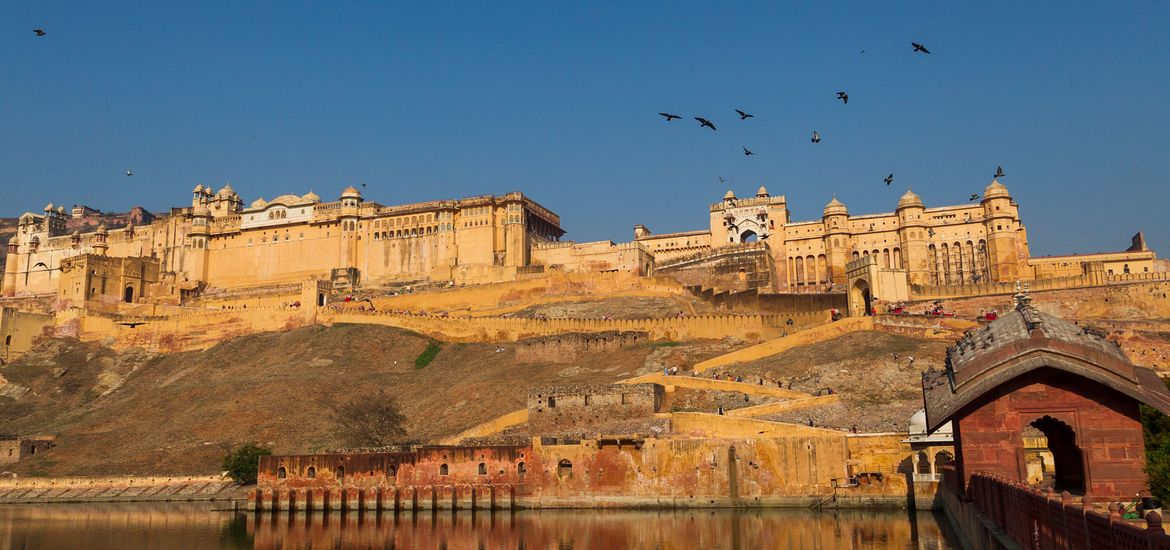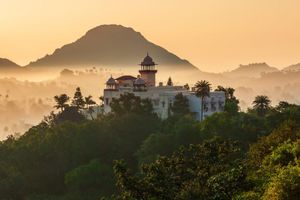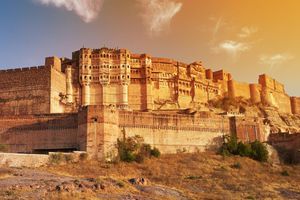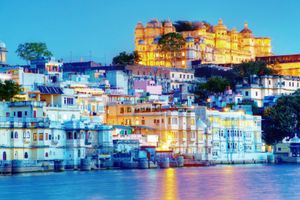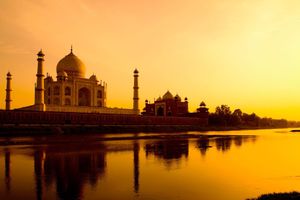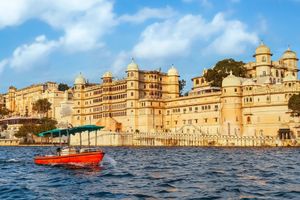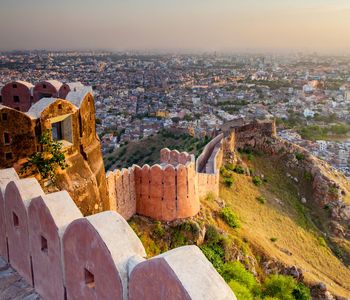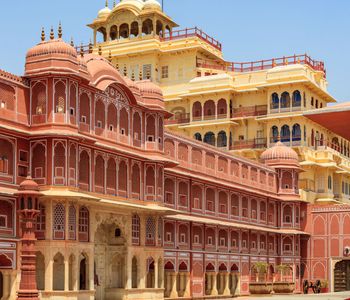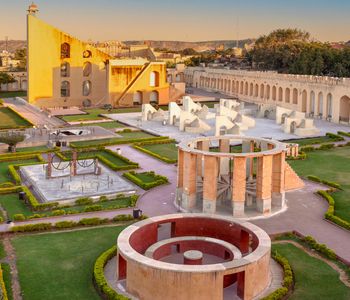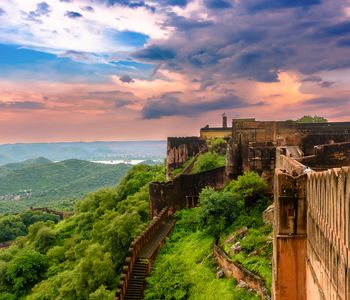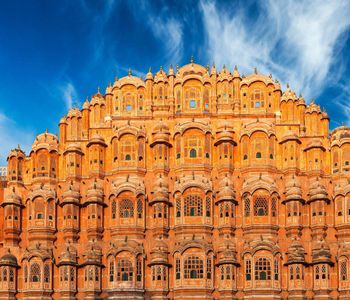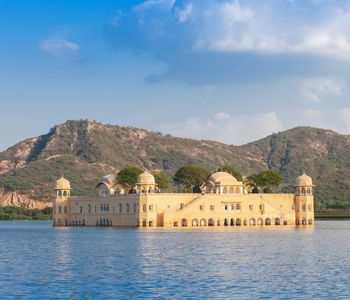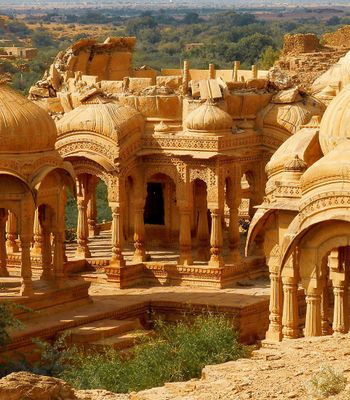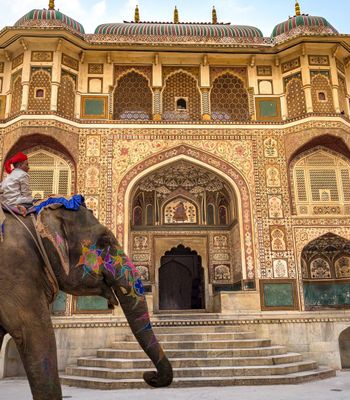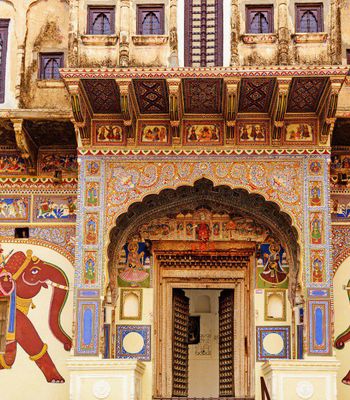As a UNESCO World Heritage Site, the Amber or Amer Fort is a striking example of a royal complex. Constructed of pink and yellow sandstone, this fort was first commissioned in 1592 by Maharaja Man Singh I. Many royal families inhabited the fort in the 1600s and beyond. As a popular landmark outside Jaipur, visiting the Amber Fort should be on any traveler's bucket list.
Looking at the History
Singh and his family lived at the Amber Fort after its initial construction. Reflecting both Rajput and Mughal architectural styles, the fort went through several improvements during the 17th century. Its strategic location on a hillside made it an imposing landmark to anyone visiting the area, too. Overall, the royals lived and worked at the fort for nearly 200 years. After the capital moved to Jaipur, the fort became a landmark for the state of Rajasthan.
Unearthing the Fort's Layout
In total, the Amber Fort has four courtyards. As you enter the Sun Gate or Suraj Pol, you stand in the main courtyard. A garden is the centerpiece with the Shila Devi Temple perched on the right-hand side. Nearby, walk up the stairwell to the second courtyard. Named Diwan-I-Am, this area served as a communications hall for the local residents and the royals.
Also, the third courtyard is home to several landmarks, such as the Hall of Victory or Jai Mandir. The Hall of Pleasure or Sukh Niwas resides here, which was an air-conditioning marvel of its time. Lastly, the fourth courtyard was home to the royal women.
Uncovering the Landmark's Highlights
As you walk through the sandalwood door to the Sukh Niwas, focus on the pipework decorating the interior. For the royals, these pipes were part of an ingenious air-conditioning system. As cool water flowed through the pipes, cool breezes resulted within the palace chambers.
Afterward, enter the Palace of Mirrors or Sheesh Mahal. Decorating the ceiling and walls are small mirrors. Because they refract light at various angles, the room sparkles as you walk through it. Then, look around for other details hidden within the architecture. From sculpted flowers to intricate raised-relief accents, the Amber Fort's detailed construction is an art in itself.
Learning About the Fourth Courtyard
The fourth courtyard is home to the traditional women's quarters. In the past, both wives and mistresses resided here. For discretion, every room is separate from the others. However, there's a common corridor linking them all to the Maharaja's room. Essentially, this royal had the ability to visit any woman without disturbing the others in the evenings.
Outside the fourth courtyard is the Palace of Man Singh I. As the main palace, it also had an outdoor pavilion for the queen and her attendants. Tall pillars with curtained corridors created a private oasis within this structure. With direct access to the town of Amer from this pavilion, the queen's servants had a short commute between home and work.
Discovering the Underground Passageways
Beneath the Amber Fort is a system of passageways. Ideally, explore the restored passageways that are clearly marked. The main passageway leads to Jaigarh Fort, which resides on a nearby hillside. If the Amber Fort was ever attacked, this passageway was an escape route for the royals to safely enter Jaigarh Fort.
Because of the sheer number of passageways, not all of them have been explored or restored. In the future, exploring the passageways might be possible as more travelers equate to extra funding for these projects. For your safety, do not explore them on your own.
Traveling to the Amber Fort
The Amber Fort is about 7 miles north of Jaipur. Because of its hilltop location, the fort requires a moderate to advanced hike to reach it. Alternatively, hiring a four-wheel-drive vehicle for access is another option.
Currently, local vendors still offer elephant and camel rides to the fort. Because of animal-care concerns, opt for a hired vehicle. Although riding animals was a traditional activity hundreds of years ago, today's conservancy values dictate a more modern way of reaching this landmark.
Staying for the Sound and Light Show
Although the Amber Fort closes at 6 p.m. daily, there's a night show shortly afterward. Located on the shores of Maota Lake, the Amber Fort Sound and Light Show illuminates the landmark every night. Learn about the Rajput culture and the fort's fascinating history. If you arrive for the evening events, visitors are often charged the Indian price for tickets.
For your convenience, there are two shows daily. The English show goes on at 7:30 p.m. For Hindi speakers, enjoy the 8 p.m. show. With the structure lit at night, the fort's light show truly highlights its architecture and historical significance.
Purchasing Tickets and Opting for a Guide
The Amber Fort opens daily at 9 a.m. As you arrive at the main gate or Suraj Pol, purchase tickets just inside the courtyard. Typically, you can opt for a personal guide or audio tour to enhance your visit, too. Because of the property's size, losing your way or encountering dead ends is possible. These guides can help you find all the fort's highlights and explain fascinating facts simultaneously.
Overlooking Maotha Lake, the Amber Fort offers spectacular views and tantalizing photography opportunities. Ideally, arrive at the fort in the morning to avoid the crowds. With an entire day at the fort, you can stroll through each courtyard and truly feel the history speaking through the architecture.
